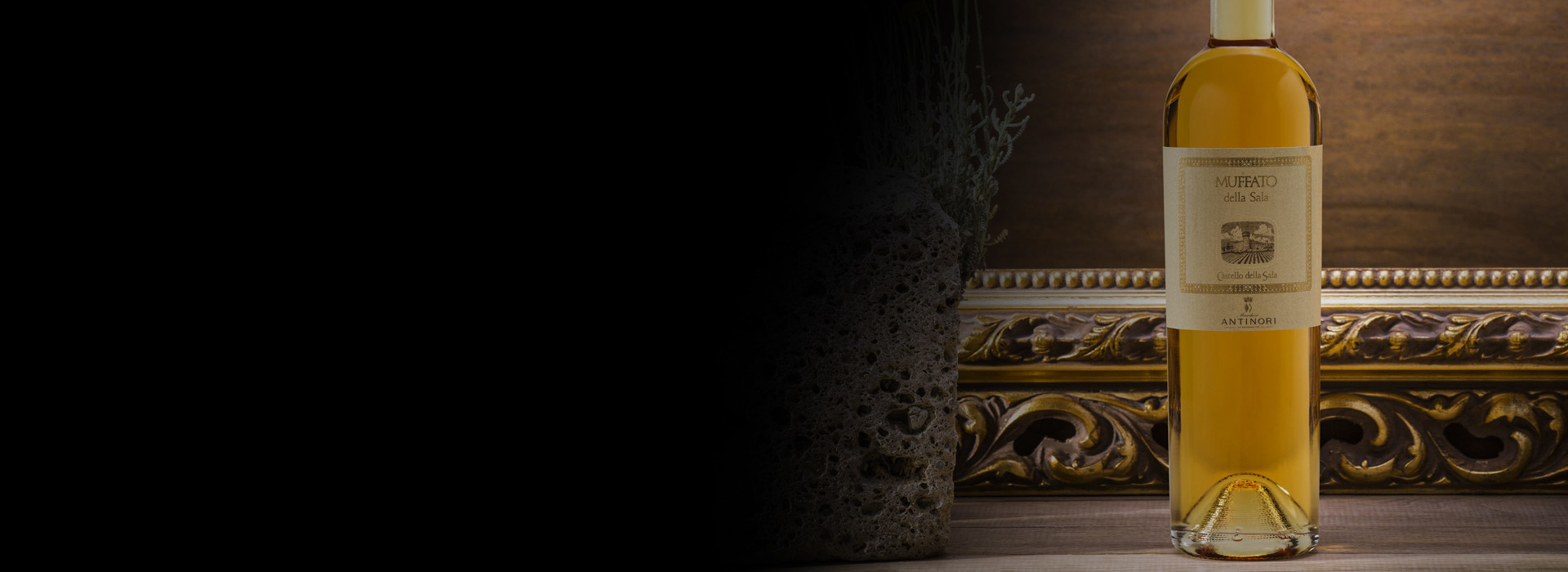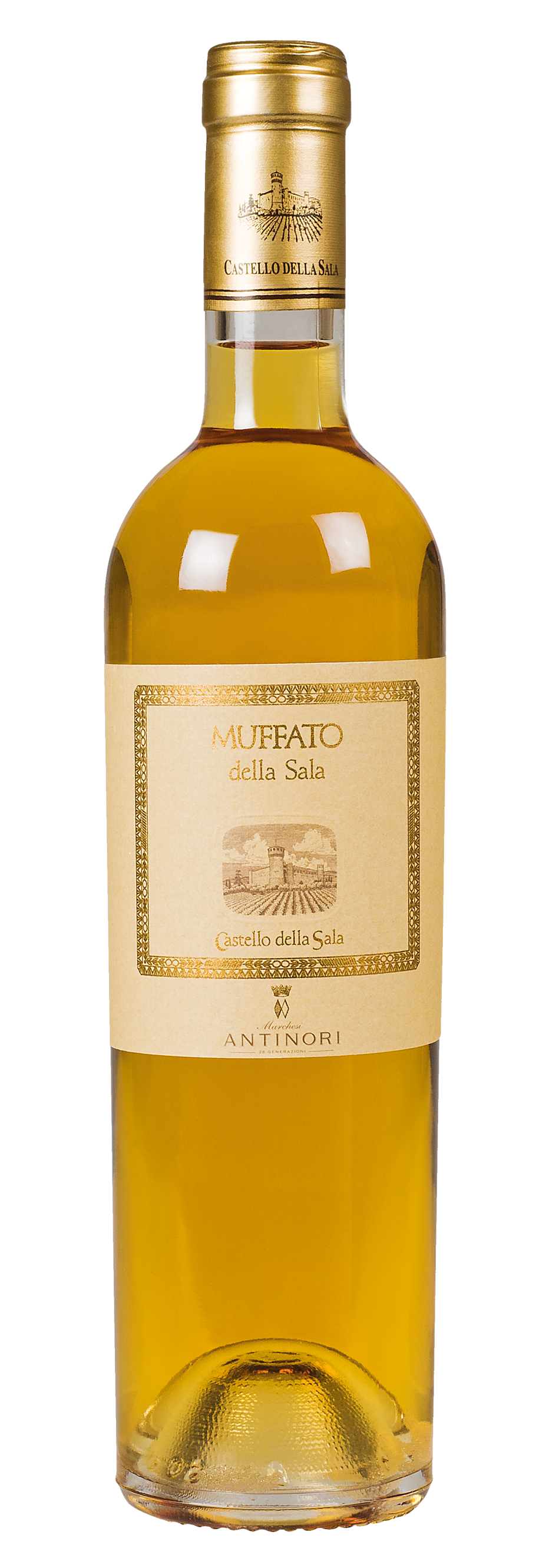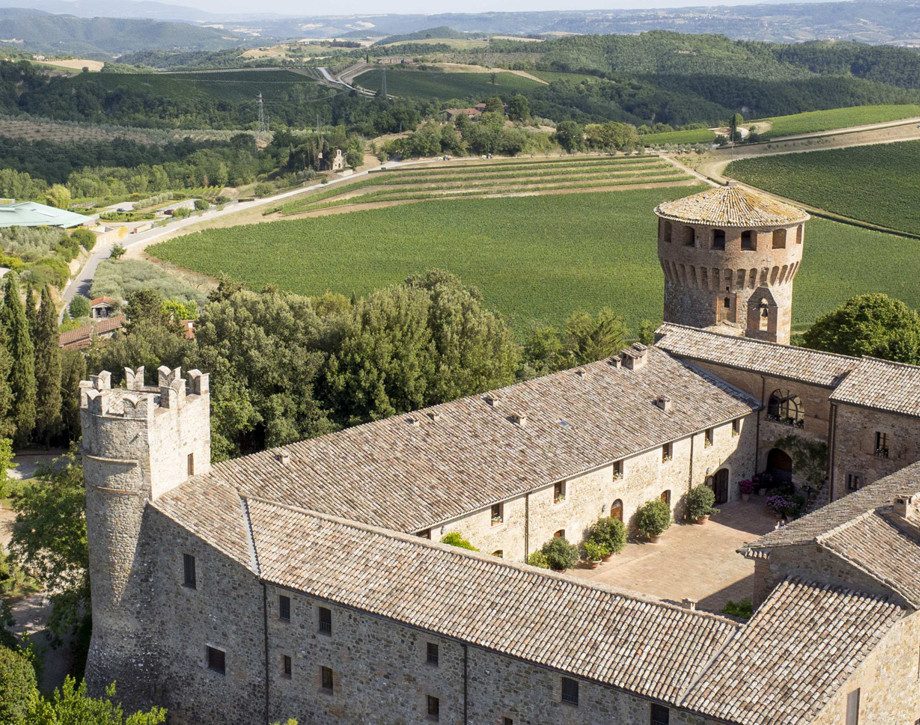Muffato della Sala

Climate
Good, regular rainfall in autumn 2003 replenished the soil with water. The winter was very cold, with plenty of heavy rain and snow. These weather conditions delayed vegetation recovery and budbreak by about 10 compared to the average, even in the more precocious varieties. After flowering and fruit set the mild, rainy weather helped the vegetation develop well although the initial delay continued until veraison and ripening. The harvest began a little later than usual, although more in line with the usual time for the winery than in 2003. Production was good but not excessive and the dry month of August helped ripen the grapes with perfect sugar and polyphenolic content while keeping them healthy.
Vinification
Muffato della Sala's grapes are grown entirely at "Castello della Sala" - 200 to 400 metres (656 to 1,312 feet) above sea-level - on calcareous Pliocene sedimentary soils rich in marine fossils with some clay. Early morning mists encourage the development of botrytis cinerea, the noble rot, which reduces the water content of the grapes, thereby provoking a higher concentration of sugar and aromas. The grapes from these plots are well botrytised and are generally harvested later than the normal vintage: in 2000 the Traminer and Riesling were harvested a couple of days before the Sauvignon Blanc and last to be harvested was the Grechetto at the beginning of November. After a soft pressing, the must fermented for 20 days at a temperature not exceeding 61°F. This produced a sweet wine which was introduced in Allier and Troncais French oak barrels where it was aged for 6 months.
Historical Data
Muffato della Sala is produced with grapes with “noble rot”, harvested in late October and early November to allow the morning mists to develop of Botrytis Cinerea, or noble rot on the grape berries. This type of mould concentrates the water of the crop, its sugars, and its aromas, endowing the Muffato della Sala with a harmonious and unmistakable fragrance. The first year to be produced was the 1987 and consisted of the blend of varieties such as Sauvignon Blanc (50%); Grechetto (30%) and Drupeggio (20%). The composition of the blend has varied over the years and now has attained its definitive results. Muffato della Sala is a fascinating wine, an expression, in small quantities, of the nature of a unique terroir.
Tasting Notes
Medium-gold color with peachy-honey aromas. A rich dessert wine that is fresh and well-balanced, with great elegance and complexity.

The Wine
This fascinating wine is a blend of Sauvignon Blanc, Grechetto, Traminer, Sémillon and Riesling affected by Botrytis Cinerea (noble rot). The morning mists and local microclimate favour the development of this rot which reduces the water content of the grapes. The resulting concentration of sugars and aromas give the Muffato its special and unmistakeable flavour.

Climate
Good, regular rainfall in autumn 2003 replenished the soil with water. The winter was very cold, with plenty of heavy rain and snow. These weather conditions delayed vegetation recovery and budbreak by about 10 compared to the average, even in the more precocious varieties. After flowering and fruit set the mild, rainy weather helped the vegetation develop well although the initial delay continued until veraison and ripening. The harvest began a little later than usual, although more in line with the usual time for the winery than in 2003. Production was good but not excessive and the dry month of August helped ripen the grapes with perfect sugar and polyphenolic content while keeping them healthy.
Vinification
Muffato della Sala's grapes are grown entirely at "Castello della Sala" - 200 to 400 metres (656 to 1,312 feet) above sea-level - on calcareous Pliocene sedimentary soils rich in marine fossils with some clay. Early morning mists encourage the development of botrytis cinerea, the noble rot, which reduces the water content of the grapes, thereby provoking a higher concentration of sugar and aromas. The grapes from these plots are well botrytised and are generally harvested later than the normal vintage: in 2000 the Traminer and Riesling were harvested a couple of days before the Sauvignon Blanc and last to be harvested was the Grechetto at the beginning of November. After a soft pressing, the must fermented for 20 days at a temperature not exceeding 61°F. This produced a sweet wine which was introduced in Allier and Troncais French oak barrels where it was aged for 6 months.
Historical Data
Muffato della Sala is produced with grapes with “noble rot”, harvested in late October and early November to allow the morning mists to develop of Botrytis Cinerea, or noble rot on the grape berries. This type of mould concentrates the water of the crop, its sugars, and its aromas, endowing the Muffato della Sala with a harmonious and unmistakable fragrance. The first year to be produced was the 1987 and consisted of the blend of varieties such as Sauvignon Blanc (50%); Grechetto (30%) and Drupeggio (20%). The composition of the blend has varied over the years and now has attained its definitive results. Muffato della Sala is a fascinating wine, an expression, in small quantities, of the nature of a unique terroir.
Tasting Notes
Medium-gold color with peachy-honey aromas. A rich dessert wine that is fresh and well-balanced, with great elegance and complexity.

Castello della Sala
Castello della Sala is located in the Umbria region, not far from the Tuscan border, about 18 kilometers from the historic city of Orvieto. The Medieval castle’s property extends over an area of 600 hectares (1482 acres), 200 hectares (495 acres) are planted with vineyards at an altitude that varies between 220 and 470 meters above sea level (722/1541 feet) on the gently rolling hillsides that characterize the beautiful countryside in this area. Castello della Sala is the perfect place for growing white varieties. The vines grow in clay and calcareous based soils, rich in fossil shells, and they are well exposed to the rising of the sun with an excellent difference of temperature between day and night. The one exception to the rule is Pinot Noir, the only red variety that has found in this area ideal growing conditions to best express its full potential.

Soil
Clay soils rich in deposits of marine fossils.
















